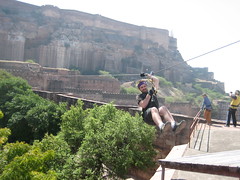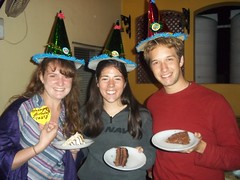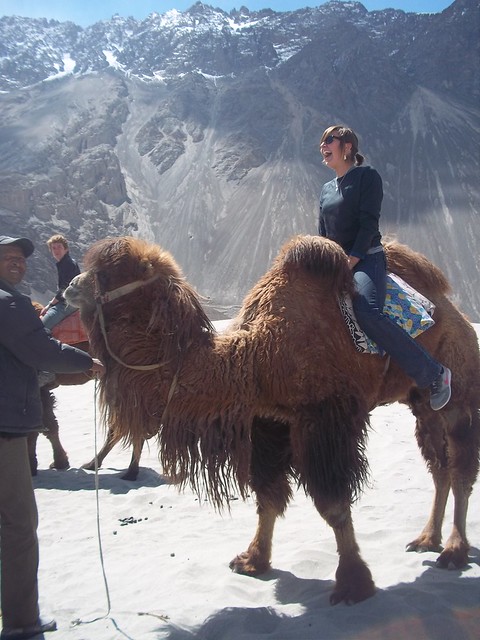 Let’s play a game. I’ll say a word, and you say out loud what your first thought is. I know that I’m just a journal entry, but just do it anyway, alright? So what do you picture when I say “India?” I would bet 100 rupees that you just thought of the Taj Mahal, which is that big white building that you can never remember the name of. The Taj Mahal (crown palace) was built by a king in love for his wife who died during its construction. The state that this building resides in is known as Rajasthan, which is an awesome place. When people think about India, Rajasthan is usually what is thought of.
Let’s play a game. I’ll say a word, and you say out loud what your first thought is. I know that I’m just a journal entry, but just do it anyway, alright? So what do you picture when I say “India?” I would bet 100 rupees that you just thought of the Taj Mahal, which is that big white building that you can never remember the name of. The Taj Mahal (crown palace) was built by a king in love for his wife who died during its construction. The state that this building resides in is known as Rajasthan, which is an awesome place. When people think about India, Rajasthan is usually what is thought of.
There is a city within Rajasthan that is called Jaipur, which has many beautiful palaces and is pink. Now I bet you thinking, “but Justin, how can a city be pink?” I tell you what, I did not believe it myself, but lo and behold, the city was pink. The buildings were painted pink because it was the color of welcoming, and the city received a visit from the Prince of Wales.
 Further on in our adventure, we came to the blue city called Jodhpur. Jodhpur also had some amazing forts and palaces, but the best part was the zip-lining. “Isn’t this supposed to be an educational cross cultural trip, Justin? What were you doing zip-lining?” Well my good sir/madame, I learned a great deal about how intimidating and adrenaline inducing physics can be, plus we also learned about the history of a fort in Jodhpur, so there.
Further on in our adventure, we came to the blue city called Jodhpur. Jodhpur also had some amazing forts and palaces, but the best part was the zip-lining. “Isn’t this supposed to be an educational cross cultural trip, Justin? What were you doing zip-lining?” Well my good sir/madame, I learned a great deal about how intimidating and adrenaline inducing physics can be, plus we also learned about the history of a fort in Jodhpur, so there.
We visited a desert area for a little while, and it was a lot more exciting than a bunch of sand hills; there’s a lot more to deserts than that! In fact there were… lots and lots of sand dunes. Alright, so maybe the desert is just sand and more sand, but still it was one of the most enjoyable places that we have visited. We got to ride camels! Sure they made my tuckus feel sore the next morning, but to be able to ride on the back of a wobbly creature was so much fun. A highlight in Rajasthan in general is the dancing, and we had a very good performance in that desert as we all dressed like we were maharajas and their queens.
Udaipur was the Indian Venice, except there were cows instead of gondolas. There were beautiful lakes there, and one of them reminded me of Lake Atitlan from Guatemala. It turns out that the James Bond movie Octopussy was filmed there! The best part about our time in Udaipur was Holi day. Holi day is now my third favorite holiday because of how awesome it is. There are fireworks and bonfires everywhere, and people throw colored dust at each other! Our group was so colorful by the end of the day that we looked like we tie died ourselves. Unfortunately, blue is really difficult to clean out of a mustache…
-Justin Rittenhouse
 Since our time here in India, the place we keep returning to is Delhi. We’re currently in our third stay here in the city, and we’ll have two more visits before we fly out in April. Needless to say, we’re starting to know the area pretty well. We all have our favorite restaurants that we return to often, we’ve taken the new city subway system all over the area, and have visited more monuments and temples then most of us would care to remember. However, tearing away the touristy cover to our trip, I and others have also come to realize that Delhi, and indeed most of the major cities we’ve visited, have numerous recurring problems.
Since our time here in India, the place we keep returning to is Delhi. We’re currently in our third stay here in the city, and we’ll have two more visits before we fly out in April. Needless to say, we’re starting to know the area pretty well. We all have our favorite restaurants that we return to often, we’ve taken the new city subway system all over the area, and have visited more monuments and temples then most of us would care to remember. However, tearing away the touristy cover to our trip, I and others have also come to realize that Delhi, and indeed most of the major cities we’ve visited, have numerous recurring problems.
For one, they all have problems deciding what to do with human waste. Soda bottles, pieces of cardboard, broken shoes, wrappers; some burn the trash publically, other times it’s seen in back alleys, but more often than not it’s simply laying directly next to the road or actually in the street, with people adding to it as they pass. A related but slightly different issue is that of public urination. We’ve grown accustomed to the sight of seeing men standing next to a wall relieving themselves onto it, even though there might be a public urinal just down the block from them. Yes, it’s a cultural thing, but it also adds to the feeling of general apathy towards public health.
Another factor is that with the recent push towards urbanization, combined with the overarching issue of overpopulation. The city is having a tougher and tougher time being able to sustain the massive amount of people that are tunneled through the system on a regular basis. Public transportation, such as the subway system, simply can’t keep up. Cars are constantly full to bursting, with hardly enough room to hold onto anything for support.
These are large scale, multi-generational problems, ones that have been building over the past decades, and ones that will continue to develop if no changes are put in place to stop them. We recently had a lecturer come in and talk about the history of the city, which put into perspective just how much these issues have grown. There are people working on these issues, but it’s going to take more than a band-aid to fix these problems.
-Gabe Brunk
